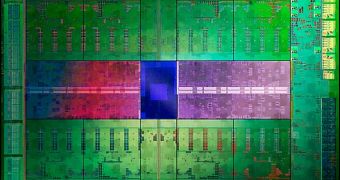NVIDIA's GeForce GTX 680 has become famous not just for its performance, but for how it manages to be powerful while also boasting a pretty low power draw and price.
NVIDIA decided it should speak, or write, about this matter a bit, so it took to its blog to explain some things.
Long story short, the Santa Clara, California-based company worked very closely with Taiwan Semiconductor Manufacturing Company.
Since TSMC was going to use the 28nm process for the Kepler chips, NVIDIA worked with it from the start and tailored the chip for that node.
This proved to be essential, since the 28nm node came to be at around the same time as the GPU line itself. In the end, NVIDIA changed its silicon process development model.
The contrast is pretty sharp with previous times, when NVIDIA and TSMC worked independently. After the whole 40nm low yield fiasco though, it was obvious that something had to change.
“We are extremely proud of what we accomplished with Kepler. It combines Nvidia’s world-class GPU engineering with TSMC’s very best 28nm process,”said Joe Greco, senior vice president of the advanced technology group, on the NVIDIA blog.
“But while Kepler was a key milestone, it is one point in a continuum. We continue to improve on what we developed and continue our collaboration with TSMC. In fact, we recently received our first version of an enhanced PQV for 20nm from TSMC. That process will yield even greater efficiency for Nvidia’s next next-generation GPUs.”
On an electron microscope, the 28nm high performance (HP) process is 30% smaller than 40nm and 35% more energy efficient. The node uses HKMG technology (high-K metal gate, for reduced leakage) and SiGe (Silicon Germanium) straining, for better silicon transistor mobility.
“Today, the primary constraint on processor performance is the power consumption budget. So our goal is always to develop solutions that deliver the highest performance within a fixed power budget. Having a more efficient process enabled us to add more processing cores, thus increasing performance,” Greco said.

 14 DAY TRIAL //
14 DAY TRIAL //